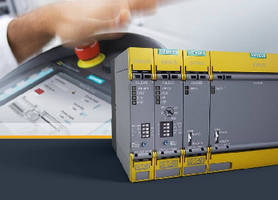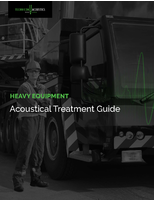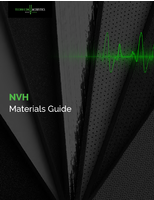Safety Relays feature modular structure.
Share:
Press Release Summary:

Available with relay or semiconductor outputs, Sirius 3SK1 Series is suitable for monitoring and control systems with simple safety requirements, such as E-stop or protective door monitoring. With Standard basic units, both mechanical and electronic sensors can be connected to relay via screw-type or spring-loaded terminals, and additional output expansions can be connected from modular system. Advanced basic units feature all characteristics of Standard version, but also allow input expansions.
Original Press Release:
Siemens Presents Modular Range of Safety Relays
The Siemens Industry Automation Division now presents Sirius 3SK1, a flexible and modular range of safety relays. The component portfolio has been greatly reduced compared to its predecessor, thus simplifying selection and use. For example, different basic units are no longer required for mechanical and electronic sensors. 3SK1 is part of Siemens' Safety Integrated concept. Safety Integrated was devised to make engineering much simpler and to increase the availability of automation systems. This concept cuts the time required to implement new machines and plants and to adapt them to new requirements.
Siemens is now offering the new Sirius 3SK1 safety relays for monitoring and control systems with simple safety requirements, such as emergency stop or protective door monitoring. The product range takes the form of a clearly structured modular system so that plant operators can quickly, simply and economically assemble an appropriate and safe configuration. The Standard and Advanced basic units are available with relay or semiconductor outputs. This means that Sirius 3SK1 is able to efficiently cover every kind of application situation. The system portfolio is rounded off by modules with additional connections for actuators or sensors and a power supply.
The Standard basic units are characterized by their simple handling and variable functionality. Both mechanical and electronic sensors can be connected to the safety relay by means of screw-type or spring-loaded terminals. DIP switches on the front of the enclosure can be used for parameter assignment so there is no need for software. Should there not be enough connections for actuators on the Standard basic unit, the user can flexibly connect additional output expansions from the modular system.
The Advanced basic units feature all the product characteristics of the Standard version and not only allow the addition of modules with output expansions, but also of modules with input expansions for additional sensors. Another advantage of the Advanced basic unit: using device connectors developed by Siemens, the basic units and expansion modules can be quickly and simply plugged on without laborious manual wiring. That means there is no chance of any wiring errors occurring and commissioning is speeded up. Siemens offers a version with a rotary encoder switch for applications that require a delayed safe disconnection of actuators. There is also a Mini version of the Advanced basic unit. At just 17.5 mm wide, the Mini is ideal for use in a confined space.
The modules for Sirius 3SK1 include an inexpensive input expansion and two output expansions. The input expansion for safety applications with more than one sensor has two inputs for mechanical or electronic sensors. Depending on the application concerned, up to five of these modules can be connected to one Advanced basic unit. Siemens offers two versions of the output expansions: 4RO has four relay outputs for currents up to 4 A; 3RO has three power relay outputs for high currents up to 10 A. All of the output expansions can be combined with both the Standard and the Advanced basic unit. Furthermore, an optional power supply is also available that covers all of the world's common control voltages and supplies up to six components on the device connector – whether basic unit, input or output expansion – with 24 V.
The system's modular structure helps users to cut their procurement, storage and maintenance costs. That means it is not necessary to have specific versions for specific countries, which makes ordering and warehousing so much easier.
More information is available on the Internet at: siemens.com/safety-relays
Press information is available on the Internet at: http://www.siemens.com/press/industryautomation/pressreleases
The Siemens Industry Sector (Erlangen, Germany) is the world’s leading supplier of innovative and environmentally friendly products and solutions for industrial customers. With end-to-end automation technology and industrial software, solid vertical-market expertise, and technology-based services, the Sector enhances its customers’ productivity, efficiency, and flexibility. With a global workforce of more than 100,000 employees, the Industry Sector comprises the Divisions Industry Automation, Drive Technologies and Customer Services as well as the Business Unit Metals Technologies. For more information, visit http://www.siemens.com/industry
The Siemens Industry Automation Division (Nuremberg, Germany) supports the entire value chain of its industrial customers – from product design to production and services – with an unmatched combination of automation
technology, industrial control technology, and industrial software. With its software solutions, the Division can shorten the time-to-market of new products by up to 50 percent. Industry Automation comprises five Business Units: Industrial Automation Systems, Control Components and Systems Engineering, Sensors and Communications, Siemens PLM Software, and Water Technologies. For more information, visit
www.siemens.com/industryautomation




